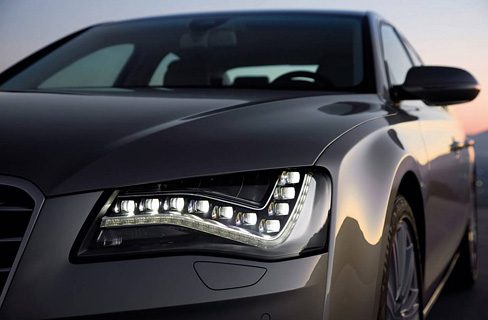Stylish
Over the past 200 years, increasing mobility, afforded by new and innovative transport solutions has been synonymous with style; from the Victorian and Edwardian opulence of the Orient Express and White Star Liners, through the luxury service and exotic destinations of the airlines of the early 20th century, to the ultimate reflection of social mobility – the sports car.
Enduringly stylish objects, including vehicles, have at their heart great design and quality materials. It is no surprise that some of the most stylish vehicles (and indeed buildings, consumer products, fashion items and accessories) of the last two centuries, have employed aluminium – both for its functional and also for its aesthetic properties; its durability, formability and wide range of finishes. The Airstream trailer, London’s Eros, Philippe Starck’s 1006 chair, the iPod, the BMW 328 racing car – all make full use of aluminium’s light weight, strength and durability and are at the same time transformed from functional objects to cultural icons through their stylish look and feel.
Streamlining, the dominant design style of the 1930s and 1940s in America, was synonymous with dynamism and modernity. Streamlining combines technology and design aesthetics in commercially innovative ways just as manufacturing companies were recovering from the Great Depression. Although streamlined objects were popular in the home and workplace, the design aesthetic found a niche in transportation because of its obvious association with aerodynamic movement. Aluminium was the perfect material for the streamlined age: clean, smooth, sleek, new and readily cast or extruded into the seductive curves that defined the look. “In using extruded shapes,” the Aluminium News-Letter reported in an article about streamlined trains, “the engineer designs the shapes he needs to fit the contour of the structure rather than designing the structure to fit conventional shapes.” Most importantly, aluminium’s lightness translated into greater speed: all-aluminium streamlined trains provided a smooth comfortable ride and broke speed records.
Into the jet age, this modernist legacy, of using futuristic materials in stylish and functional ways, has seen aluminium employed not only as a hidden benefit for long lasting strength and weight reduction but also as a key feature of the look and feel of vehicles, at sea, in the air and on land.

It is no surprise that some of the most stylish vehicles (and indeed buildings, consumer products, fashion items and accessories) of the last two centuries, have employed aluminium – both for its functional and also for its aesthetic properties; its durability, formability and wide range of finishes. The Airstream trailer, London’s Eros, Philippe Starck’s 1006 chair, the iPod, the BMW 328 racing car – all make full use of aluminium’s light weight, strength and durability and are at the same time transformed from functional objects to cultural icons through their stylish look and feel.